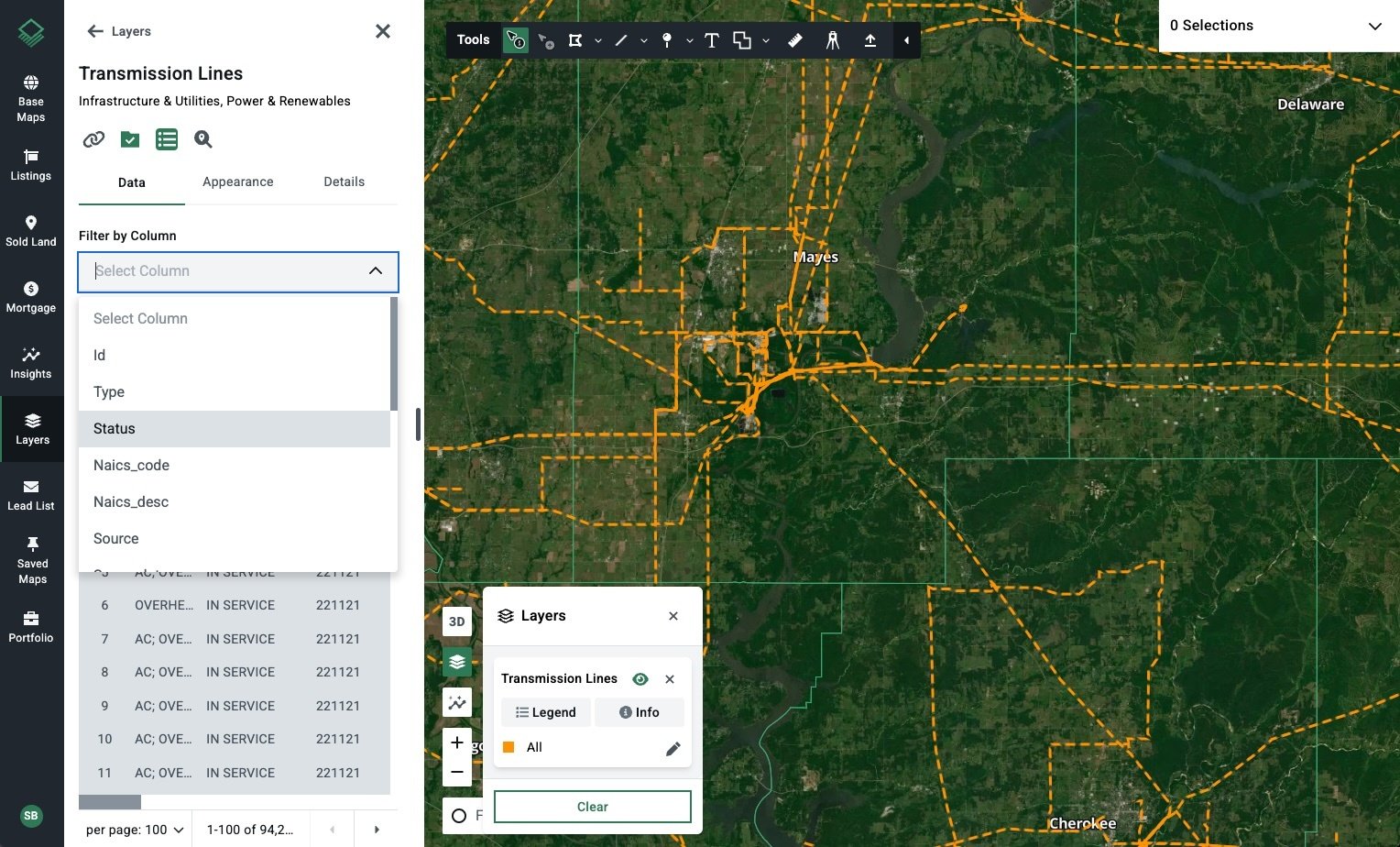High-voltage corridors influence what gets built, where, and how quickly. With Acres.com, developers can gain direct access to the power infrastructure data needed to assess feasibility early, reduce risk, and plan with confidence. Our Transmission Lines Map is an essential tool for any due diligence process.
What are Transmission Lines?
Transmission lines are high-voltage pathways that carry electricity from power plants to substations before distribution to homes and businesses. Think of them as the highways of the U.S. electric grid—built to move electricity efficiently and reliably.
Their presence can significantly affect:
- Land use planning
- Development feasibility and timelines
- Zoning and permitting outcomes
Map of U.S. Transmission Lines
Accessible via the Acres Layer Library, the Transmission Lines Map provides:
- Line Type: Overhead vs. underground, critical for layout and visibility planning.
- Voltage Level: Impacts safety buffer zones and setback requirements.
- Ownership and Operator: Key for understanding easement access and permitting processes.
Connect with our sales team to start exploring the Layer Library today!

Acres’ nationwide power plant data is derived from the Energy Information Administration (EIA).
Types of Transmission Lines
Knowing the type of line on or near a property can help you plan better and avoid surprises during development.
Overhead Lines
- Common in rural and suburban areas
- Visually prominent
Planning Tip: Adjust site layouts to avoid overestimating buildable space. Maintain adequate setbacks.
Underground Lines
- Found in urban or environmentally sensitive zones
- Less visually obtrusive but still restrictive
Planning Tip: Easements may not be visible but can limit grading and construction. Always verify.
Key Development Considerations
Easements and Rights-of-Way
Most transmission lines are located within easements or designated rights-of-way. These restrict land use and grant utility companies access for maintenance and upgrades.
Permitting and Zoning
High-voltage corridors can restrict zoning and land use applications. Early awareness helps with zoning strategies or design pivots.
Safety Setbacks
OSHA compliance and local codes dictate minimum clearance. Proximity to transmission lines may require design changes to ensure safety.
Site Layout and Density
Infrastructure can limit buildable space, influence building placement, and affect height and setback regulations.
Utility Coordination
Knowing the utility operator early in the process can streamline permitting and reduce project delays.
Use Case: Pre-Development Due Diligence
Before acquiring or entitling a site, developers use the Transmission Lines Map to:
- Quickly screen parcels for infrastructure constraints
- Identify buffer zones
- Access utility ownership details to coordinate early
- Analyze easement impacts
- Inform site layout and design
Combine this layer with parcel boundary data, zoning insights, and market comps for a complete feasibility view.
Final Thoughts
With Acres’ Transmission Lines Map and other power infrastructure maps, you can quickly evaluate power availability for your next build.
Make informed development decisions with comprehensive land intelligence. Contact our sales team for a demo and start exploring today.
